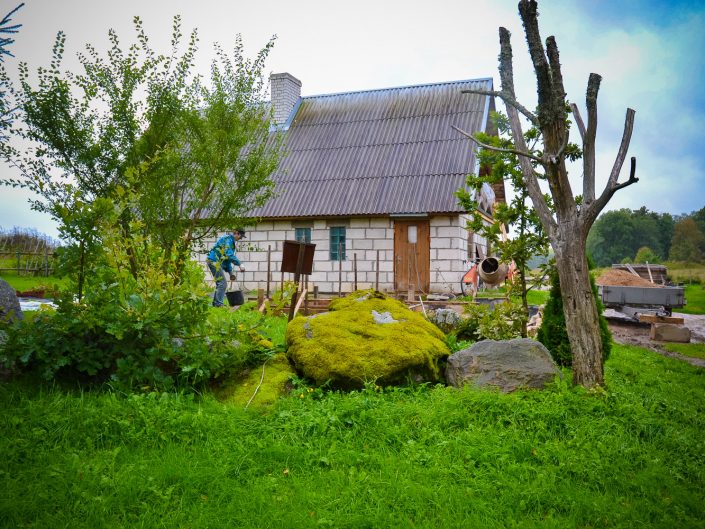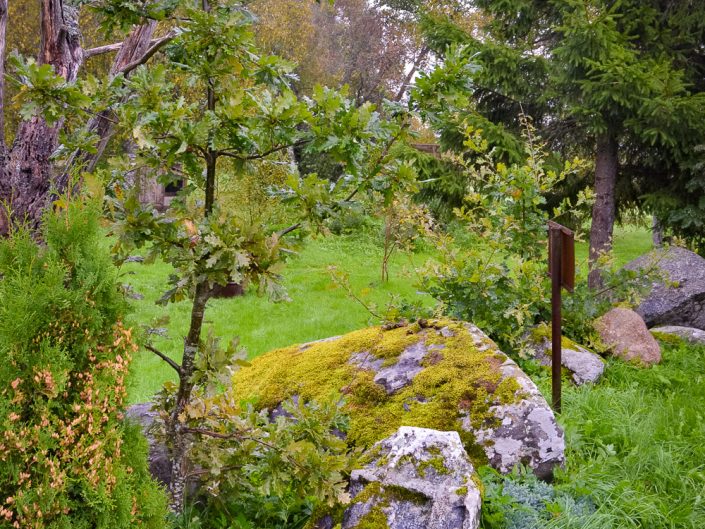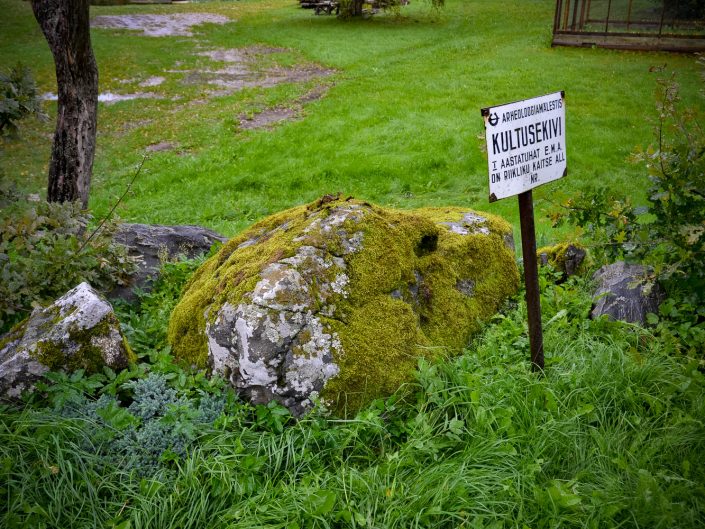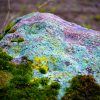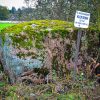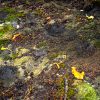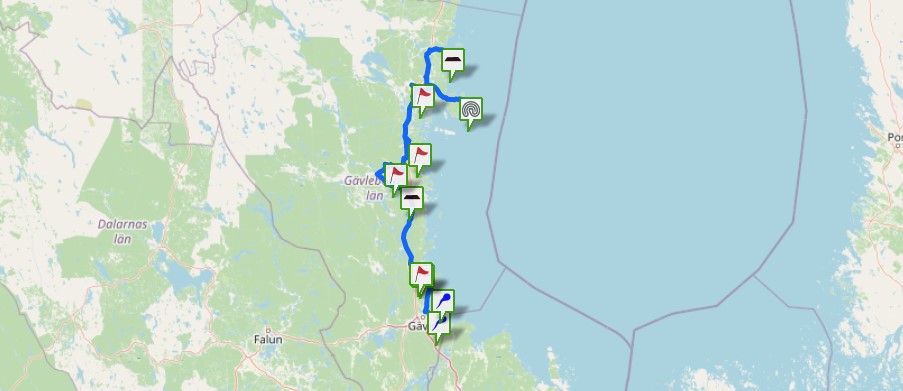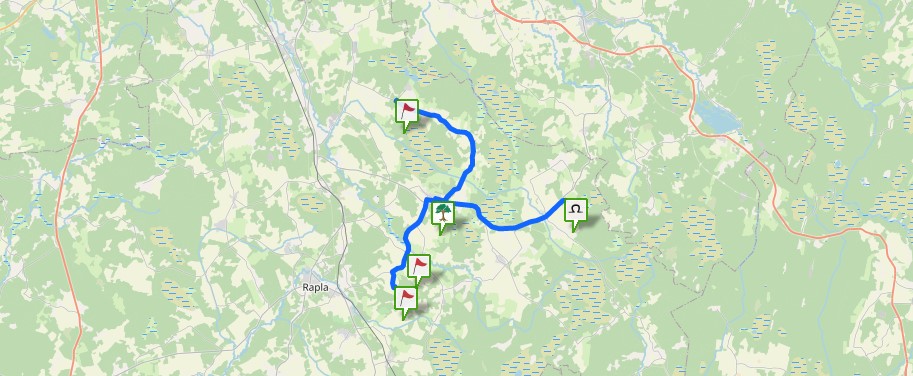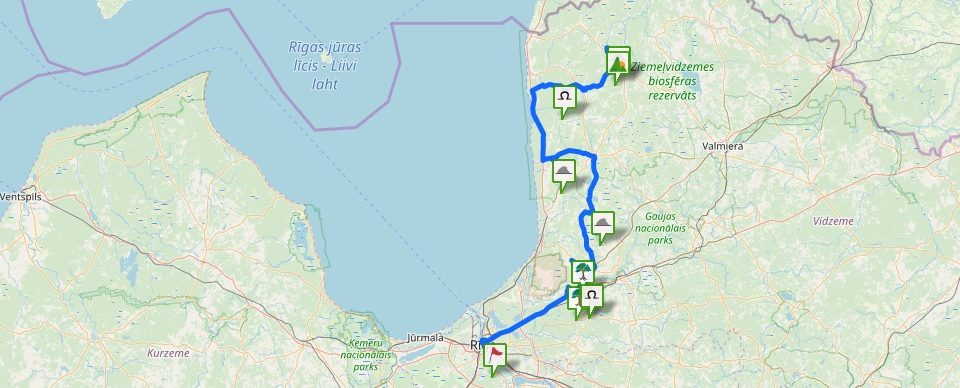2 m pikk, 1,5 m lai, 0,9 m kõrge, hall, tumedate tähnidega. 16 lohku läbim. 5-6 cm, süg. 1-2 cm.
Cup-marked stones have borne witness to the history of domesticated agriculture and settlement in Estonia. Approximately 1,750 cup-marked stones have been found in Estonia and they are mainly located in three counties in northern Estonia: Lääne-Viru, Ida-Viru and Harju. Historical Juuru parish in Harju County is particularly rich in cup-marked stones, with 30 cup-marked stones featured in this list. Cup-marked stones have small cup-marks with a diameter of 3-10 cm and a depth of 0.5-5 cm. A cup-marked stone usually has from 1-10 cup-marks. Nõiakivi (Witch’s stone) in Assaku near Tallinn has the most, with 405 cup-marks. Boulders of all sizes and appearances can be cup-marked stones. The smallest cup-marked stone found thus far could almost fit into a pocket. As a rule, the cup-marks have been carved on to the surface of the stone, and in some cases, on its side. No folklore is generally associated with cup-marked stones and they have been found solely according to their external characteristics, the cup-marks. No archaeological finds were made around cup-marked stones that could be associated with the making of the cup-marks or the use of the cup-marked stones. Scholars associate the making of the cup-marks on the stones with slash and burn agriculture and settlement in the late Iron Age. The cup-marks were probably made 2,000-3,000 years ago. The greatest share of the cup-marked stones is currently located on land under cultivation. The cup-marks could have a religious function, or some practical purpose unknown to us. The suppositions that the cup-marks are related to folk astronomy, a sun cult, honouring ancestors or sacrifices have not yet been proved. The development of research into the cup-marked stones is reflected by the changes in name for the phenomenon over the last century: In the early 20th century they were called ohvrikivid (sacrificial stones), during the Soviet period they were called cult stones, and from the late 20th century they were known as cup-marked stones. A few of the cup-marked stones were used for sacrifices as well. According to a few traditional sources, the cup-marks were made to remember the dead. The cup-marks were also rubbed with sheep’s wool and lanolin for good luck with sheep farming.
Extra materials:
Contains information from the project:

Added by
Founder and maintainer of www.latvijas-pilskalni.lv, www.senvietas.lv and hillforts.eu.
